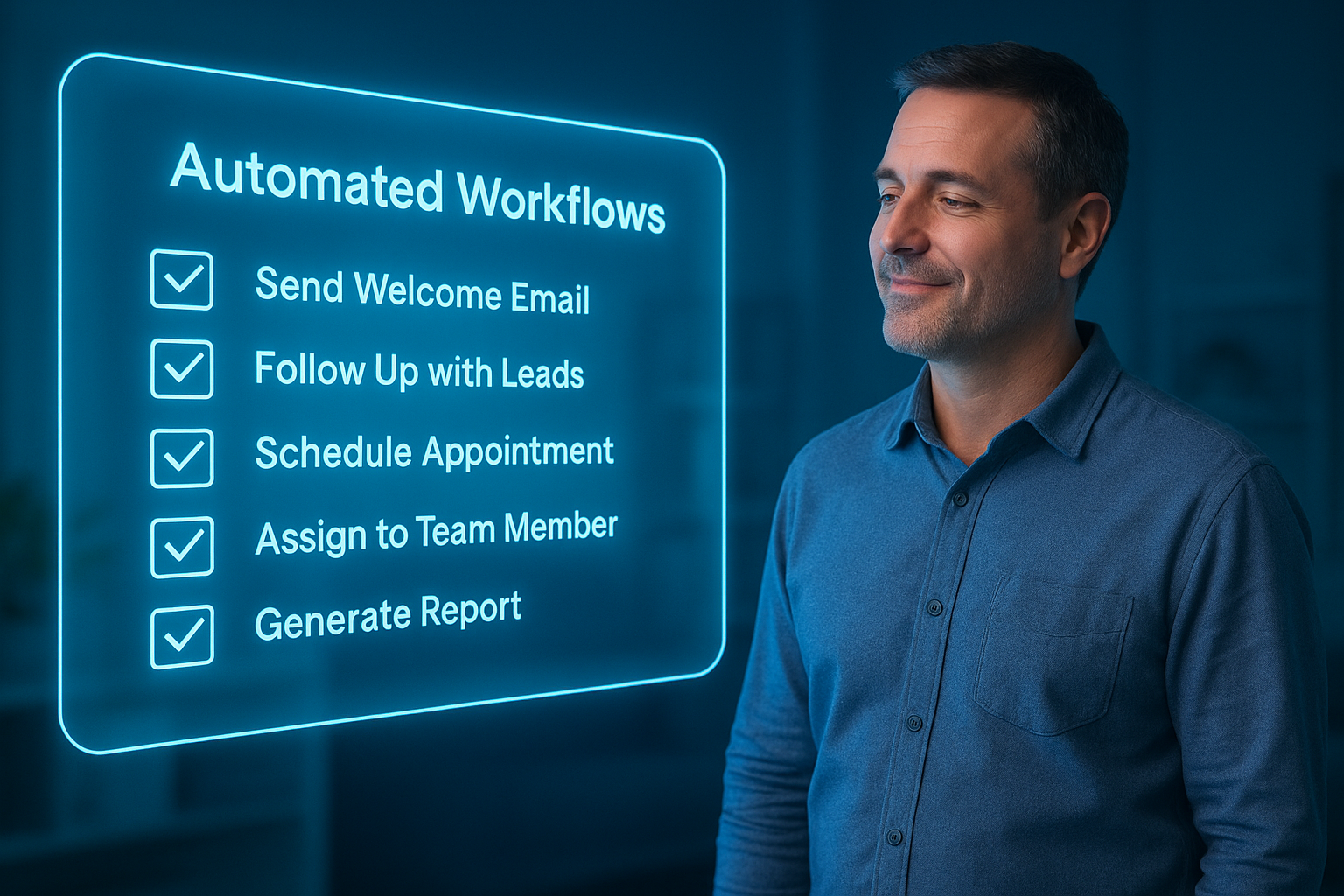The CEO Mindset Shift: From Technician to Leader
Are You Working IN Your Business Instead of ON It?

Most small business owners start the same way: by doing everything themselves. At first, it makes sense. You know the service. You know the customer. You move fast. You care deeply. But eventually, what got you here won’t get you there. There comes a point when wearing every hat stops being effective—and starts becoming a liability. When your growth stalls not because of demand, but because you’ve built a business that can’t run without you. That’s the technician trap. And escaping it is the first step to building a business that scales.
The Technician vs. The CEO
In The E-Myth Revisited, Michael Gerber explains how most entrepreneurs don’t start a business—they start a job. They go from being a great technician (baker, designer, contractor, coach) to being self-employed without shifting their mindset.
The technician is inside the weeds. Solving fires. Wearing 12 hats. Running on adrenaline and memory.
The CEO is above the business. Designing structure. Reviewing metrics. Delegating outcomes. Building systems.
The difference isn’t talent. It’s identity.
And shifting into the CEO identity is the single most important thing you can do to grow without burning out.
Check out Why Most Businesses Fail to Scale
What the CEO Mindset Actually Looks Like
This shift isn’t just about stepping back—it’s about stepping up. Here’s how the mindset change plays out:
- From “I do it best” to “My team and systems do it best”
- From reactive to proactive
- From tasks to outcomes
- From being in control to building control systems
It’s the difference between solving every problem yourself—and building a business that solves problems with or without you.
One real-world example of this transition is Marcus Sheridan, founder of River Pools. He started as a pool installer and became the CEO of one of the most visited pool websites in the world. He credits this growth not to ads or hustle, but to systems—delegating operations, documenting processes, and becoming a teacher to his market.
Signs You’re Stuck in Technician Mode
You might feel like the only way to get it done right is to do it yourself. That’s not a sign of excellence—it’s a red flag.
Here are common symptoms:
- You answer every client call and email personally
- You’re the bottleneck in approvals or task handoffs
- You struggle to take more than a day off
- You don’t trust your team to do things “right”
- You’re involved in every project
This mode is common. But it’s not sustainable.
You don’t scale a business by doing more. You scale it by building systems that do more without you.
Step 1: Build Systems Before You Build a Bigger Team
Hiring without structure is a recipe for frustration. You’ll feel like you’re babysitting rather than being supported.
Instead, start by documenting everything you do more than twice:
- Onboarding processes
- Delivery workflows
- Client communications
- Internal task checklists
These Standard Operating Procedures (SOPs) become the training wheels for your team—and the building blocks of scale.
Companies like ClickFunnels and Basecamp scaled rapidly by systematizing their operations early. They didn’t just hire—they hired into well-defined roles with predictable processes.
Step 2: Automate What Doesn’t Require Human Touch
The CEO mindset is automation-first. Not because automation replaces people—but because it frees them.
Automate:
- Appointment scheduling
- Lead follow-up sequences
- Review requests
- Status updates
- Repetitive internal tasks
Automation allows your team to focus on high-value, high-touch interactions—and eliminates the “ping pong” of manual follow-up.
Step 3: Shift to Strategic Thinking Time
You can’t be the visionary if you never step back to see the big picture.
Block weekly “CEO time” to:
- Review KPIs and leading indicators
- Audit team capacity and progress
- Forecast next quarter’s growth plan
- Troubleshoot system gaps, not people
This isn’t indulgent. It’s your job.
Real CEOs don’t just manage people—they manage the structure that supports people.
Step 4: Let Go of Ego and Redefine Control
For many founders, the hardest part is letting go. But doing everything yourself doesn’t mean you’re in control. It often means you’re holding your business hostage to your bandwidth.
Control comes from:
- Visibility through dashboards
- Clear SOPs and checklists
- Team accountability structures
- Consistent client outcomes
You don’t need to touch every task. You need to build a system that ensures every task gets done well.
Step 5: Redefine What Success Looks Like
The technician sees a busy calendar and full inbox as a sign of productivity.
The CEO sees a clear schedule and independent team as a sign of scalability.
True growth isn’t about being needed everywhere. It’s about building something that works without you.
Final Thoughts
Becoming a CEO isn’t about working less. It’s about thinking differently.
If you want to:
- Grow your business without burning out
- Lead without micromanaging
- Free up time to think, plan, and scale
...then it’s time to stop being the technician—and start being the architect.
You don’t need to have all the answers. But you do need to stop being the answer to every problem.
What's Next?
Ready to become the CEO your business needs? Start with our guides on system building and scaling strategies—and transform your business from dependent to dynamic.
More Marketing Tips, Tricks & Tools










